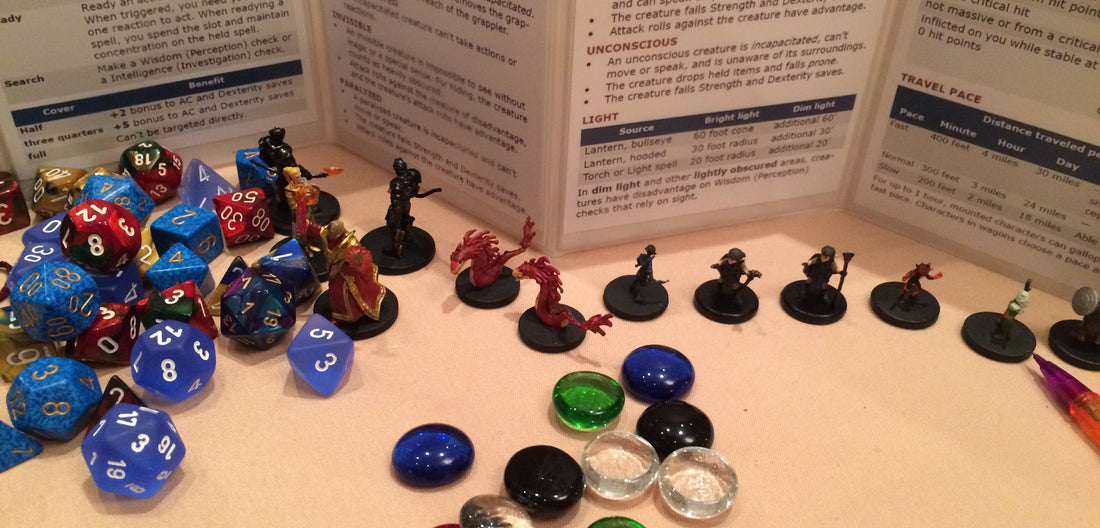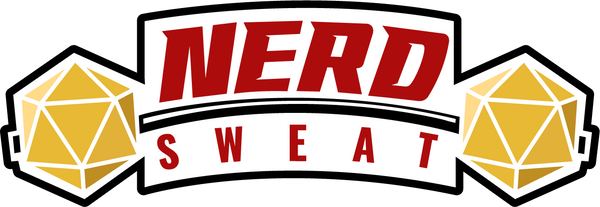
From Players to Leaders: How Dungeon Masters Develop Management Skills
Have you ever considered that running a Dungeons & Dragons campaign is basically a masterclass in leadership? Whether you're guiding adventurers through a treacherous dungeon, mediating conflicts between players, or adapting to unexpected choices, being a Dungeon Master (DM) sharpens skills that apply far beyond the gaming table.
D&D isn't just a game—it’s a simulation of leadership, wrapped in storytelling and strategy. And for those looking to develop management, communication, and problem-solving skills, there’s no better (or more fun) training ground.
Let’s roll initiative on why being a DM makes you a better leader.
1. Communication: Setting Expectations and Inspiring a Team
A great DM, like a great manager, needs clear communication skills. You have to explain the game’s objectives, ensure players understand the rules, and most importantly—engage and inspire your team.
Example: Imagine you're setting up a campaign where your players are tasked with defending a town from an impending invasion. You need to paint a compelling picture of the town’s desperation, outline their options, and guide them toward making informed decisions—just like a leader rallying a team for an important project.
In business, managers do the same when they communicate company vision, project goals, or expectations. The more clearly you articulate a challenge, the better your team (or adventuring party) can respond.
Resource: “The Art of Explanation” by Lee LeFever—A great book on improving communication, whether in storytelling or the workplace.
2. Adaptability: Handling Unexpected Challenges
No DM has ever run a session exactly as planned. Your players will ignore your plot hooks, solve puzzles in ways you never imagined, or set an inn on fire just to see what happens. As a DM, you learn to think on your feet and pivot when necessary.
Example: You’ve crafted a dungeon where players need to find a hidden key to unlock the final door. But one of your players, a clever rogue, decides to pick the lock instead. What do you do? A rigid DM might insist on their original plan, but a good DM embraces the unexpected and adjusts the challenge dynamically.
Likewise, in the workplace, leaders must adapt to changes—a sudden deadline shift, a budget cut, or an employee’s unique solution to a problem. The ability to improvise without derailing progress is a hallmark of strong leadership.
Resource: “Who Moved My Cheese?” by Spencer Johnson—A short but impactful book on adapting to unexpected change.
3. Conflict Resolution: Managing Group Dynamics
In D&D, players will argue. The barbarian wants to attack, the wizard wants to negotiate, and the rogue is already looting the bodies. As a DM, it’s your job to mediate disputes, ensure everyone’s voice is heard, and keep the game moving forward.
Example: Two players in your campaign have a disagreement—one wants to prioritize the main quest, while another wants to spend time developing their personal storyline. Instead of taking sides, a great DM facilitates a compromise by integrating both goals into the campaign.
In leadership, the same principle applies. Whether dealing with office disagreements or strategic debates, good managers know how to balance different perspectives while keeping the team united toward a common goal.
Resource: “Crucial Conversations” by Patterson, Grenny, McMillan, and Switzler—An excellent guide on navigating difficult conversations in both gaming and leadership.
4. Motivation and Engagement: Keeping the Party (or Team) Invested
A great DM knows how to keep players engaged, ensuring everyone at the table feels invested in the story. The same applies to workplace leadership—if your team isn’t engaged, they won’t be motivated to perform.
Example: A DM introduces personalized quests—the paladin must atone for a past failure, while the bard seeks a long-lost mentor. Now, the players feel personally connected to the campaign.
In the workplace, a great leader finds ways to connect employees to their work, whether through personal development opportunities, creative problem-solving, or celebrating small victories.
Resource: “Drive: The Surprising Truth About What Motivates Us” by Daniel H. Pink—A deep dive into motivation that applies to both RPGs and real-world leadership.
5. Strategic Thinking: Balancing Big-Picture Goals with Small Details
D&D campaigns require long-term planning, but they also thrive on moment-to-moment decision-making. As a DM, you juggle both—creating an overarching story while ensuring each session delivers meaningful progress.
Example: Your campaign’s villain is a ruthless warlord. You’ve mapped out his five-phase master plan, but you also have to handle the small details, like how his spies are infiltrating the city or how your players might counter his schemes.
Leaders in business and life do the same—they balance long-term vision with daily execution.
Resource: “The Art of Strategy” by Dixit and Nalebuff—A great resource on thinking strategically, whether planning a campaign or leading a team.
Final Thoughts: Leadership is Just a Campaign in the Real World
If you’ve ever run a D&D session, you’ve already practiced leadership—you’ve inspired a team, adapted to challenges, resolved conflicts, motivated individuals, and strategized for long-term success.
So next time you’re behind the DM screen, remember: You’re not just running a game. You’re training to be a leader.
And if you ever find yourself in a leadership role in the workplace, take a lesson from D&D—keep the party engaged, embrace unexpected twists, and make sure everyone has a chance to shine.
After all, being a great leader is just another kind of adventure.
What leadership skills have you learned from running D&D? Share your experiences in the comments! 🎲
